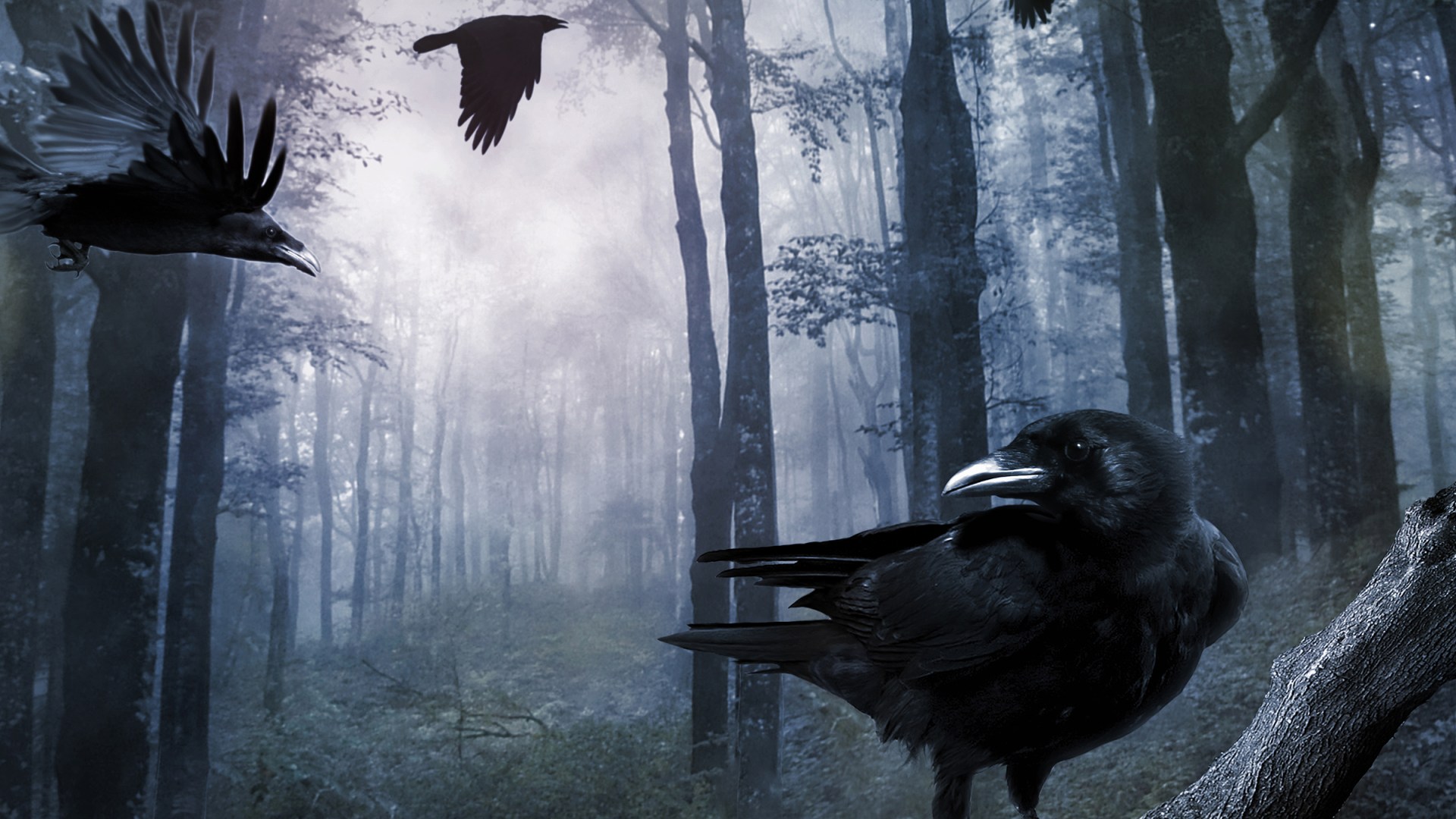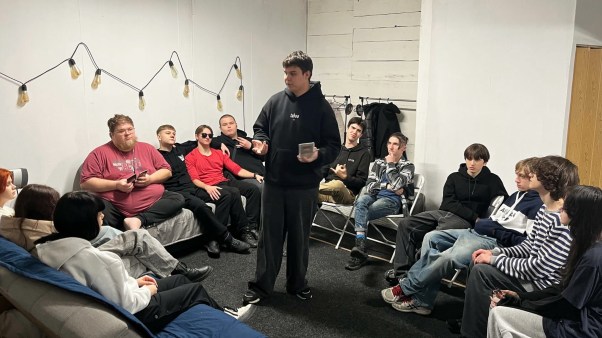There’s an old “Far Side” comic showing a crow standing on the road beside a poor, flattened creature. The crow holds a spatula upright, the way a person would while waiting to flip a pancake.
It’s barely exaggerated. Crows and ravens can make and use tools to get food, even when the tools require multiple steps. The New Caledonian crow is especially famous for its skills. They track down just the right size branch, break it at just the right point, remove its leaves and bark, and work the end until it makes a hook. Then they use their new hook tool to grab insects inside rotting wood and to move leaves around as they forage.
That Aesop’s fable about the crow and the pitcher isn’t off the mark, either. Researchers documented crows placing stones in a deep glass of water that had a worm floating in it. The crows dropped in solid, heavy stones to raise the water level and eat the worm. The birds skipped lighter and hollow objects that wouldn’t displace as much water. This, the researchers said, puts crow intelligence (at least in this field) on par with 5- to 7-year-old human children. (Similar experiments with tools rank chimpanzee intelligence about the same as a 2-and-a-half-year-old kid’s.)
Now a series of new experiments is asking whether crows are smart enough to understand death.
Investigating funerals
I’ve seen abundant crows all my life. But only since moving to the Pacific Northwest have I noticed crows ganging up on hawks and eagles, chasing them away. That antipathy between crows and hawks helped to make for an interesting recent experiment for researchers at the University of Washington.
First, the researcher laid out food for the crows. After the crows got used to seeing food at the site, volunteers launched their three-part test. They visited the feeding site 1) while holding a stuffed crow made to look dead; 2) while holding the stuffed dead crow as a stuffed hawk, made to look alive, perched nearby; or 3) without the stuffed crow but with the hawk perched nearby. (There were also two control groups. In one, there was just a person with neither a dead crow nor a stuffed hawk. In the other, there wasn’t even a person, just the food.)
In all three test scenarios, the crows responded as they normally do to the death of another crow. One crow, the one in whose territory the experiment was carried out, discovered the “dead” crow and began to caw. This attracted several other crows who gathered around and squawked at the researcher. This “funeral” lasted for between 10 and 20 minutes, then the visiting crows flew off again.
The effect of the ritual lasted much longer than those 20 minutes. Even six weeks later, crows could identify the faces associated with the dead crow. (Volunteers wore latex masks so they wouldn’t be attacked by crows outside the experiment and so different volunteers could be used.) Upon seeing that mask, the crows would gather to squawk at the person who weeks earlier had held the dead crow or appeared with the predatory hawk.
When the hawk was present, the dead crow prompted more crow funerals and more crows at the funeral. That’s not surprising: The hawk without the dead crow raised as much alarm as the dead crow without the hawk. But they stayed away from the feeding site significantly longer after seeing a dead crow than after seeing a hawk. That helped to confirm researchers’ suspicions that crow funerals are used to alert neighbor crows to sources of danger—and to distinguish between kinds of danger. The crow community was learning who was associated with a crow death, but also who was not.
(Worth noting: The crows scolded for almost every dead crow. But they only cawed about 40 percent of the time when researchers used a “dead” pigeon instead. And pigeons didn’t lead to the “funeral” mobs. And in case you’re wondering: Yes, researchers also ran the experiment on pigeons; they don’t care much if there’s a dead pigeon around.)
Crows’ ability to recognize human faces and remember them for years is actually remarkable. When was the last time you could tell two crows apart?
But do crows mourn?
It is the scientist’s job to evaluate animal behaviors in terms of adaptation for survival, but it is fair to wonder whether there isn’t something more than information sharing going on when crows gather around their dead. Do they grieve the death of one of their own?
Like crow funerals, human funerals also serve specific purposes. A key function is to offer a dedicated space for grieving—the emotional process of working through the deep loss of a loved one. They serve as an opportunity for survivors to remember and honor the life of someone they cared about. For those closest to the deceased, a funeral is also part of the process of re-entering their community with a reshaped social network. No longer is the spouse the center of a person’s web of relationships. Establishing a new center takes time, but it traditionally begins at a funeral.
Funerals are also an important chance to reflect on and recommit to those things in life that are most valuable. A Christian funeral reflects our hope in Christ and in the eventual resurrection of our bodies. It reminds all of us that death will come to us eventually, and motivates us to live in light of that reality. At their best, funerals shift our priorities.
And so I wonder if crows do indeed mourn, at least in some birdlike way. The BBC’s headline for the recent study reads, “The birds that fear death.” Crows may indeed experience fear. After all, it is our emotions that motivate our actions, and emotion causes us to assign priority to the information we learn.
The University of Washington’s Kaeli Swift is following up her research on crow funerals with further investigation into what is happening in the bird’s minds. Do they mourn their dead? Initial signs suggest not; areas of the brain particularly active during these events are associated with learning rather than emotion. Still, Swift says that may not be the final story. It remains to be seen how the crows would respond to the deaths of their mates (since they mate for life) or another family member. “It is hard to believe,” she says, “that the these intelligent, long-lived crows, would feel nothing upon the death of its life-long partner.”
A crow “funeral” may merely involve the transfer of information about the death and causes of death of a particular bird. The gathering may serve the purpose of alerting a community of crows to the danger of a particular person or hawk or any other hazard. But it is emotion (sadness, fear, anger) that assigns value to that piece of information. So I’d wager that in a bird’s own way, there is some sort of grief and mourning that attends a crow’s funeral. It may only last 10 or 20 minutes, but it is easy to imagine that there is a unique emotional quality to the avian gathering, one that is powerful enough that the information about a danger sticks.
All creation does indeed seem to groan, awaiting redemption. Crows, elephants, giraffes, dolphins, and chimpanzees all seem to mourn for their dead, often in groups. Perhaps there is a social function in the “funerals” for these group animals as well.
Humans, of course, are by far the most social of creatures. While 2-and-a-half-year-old children are about equal to chimpanzees in terms of their ability to manipulate tools, they are light years beyond chimpanzees in their social intelligence. Children ace the social tests that stump the monkeys.
So it makes sense that human funerals are more complex, more social, and serve a broader range of purposes. What doesn’t make sense is that as birds still hold funerals, humans (at least in the Western Hemisphere) are pulling back from them dramatically. There are lots of reasons why people are holding fewer funerals: they’re seen as too morbid, too expensive, too religious. But if a crow is missing out on information necessary for its survival by skipping a funeral, perhaps we are, too.
Birds and humans need funerals for their survival. We need to align our fear of death with specific threats in our environment. For humans, when a funeral reminds us of our deepest beliefs and our priorities in life, it has accomplished its purpose.
Rob Moll is a CT editor at large and author of The Art of Dying and What Your Body Knows about God. His article “Heavenly Minded and Earthly Good” appeared in issue 8 of The Behemoth.










